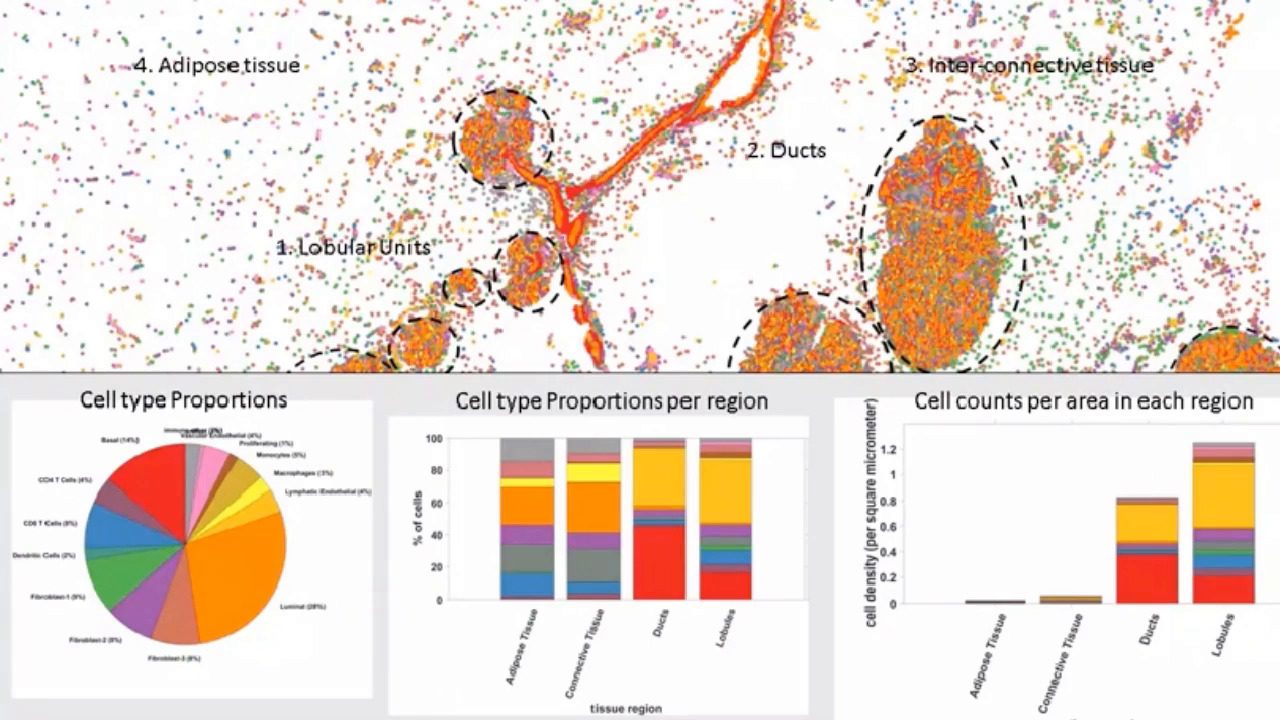Main Menu
We’ve rebranded some of our products, learn more ›
CODEX® is now PhenoCycler, Phenoptics™ is now Phenolmager.
Human Cell Atlas: A Spatially Resolved Map of Human Breast Tissue
Webinar | March 30, 2021
The mission of the Human Cell Atlas is to create comprehensive reference maps of all human cells to describe and define the cellular basis of health and disease. Single-cell analysis methods allow us to catalogue the vast diversity of cellular phenotypes that exist in a sample. However, cell behaviour is also a function of all that surrounds it, and how cells organize and interact within a tissue sample can impact biological and clinical outcomes.
With the advent of high-resolution imaging platforms like PhenoCycler™ (formerly CODEX®), researchers can now analyze the spatial and geographical context of each individual cell and build comprehensive maps of all human cells and tissues. In the true sense of the word, we can now build a complete ‘cell atlas.’
In this webcast, Dr. Kai Kessenbrock explains how spatial phenotyping can enhance the biological insights from Human Cell Atlas initiatives. Using the Human Breast Cell Atlas project as an example, Dr. Kessenbrock shares how his team discovered unique cellular niches within the breast tissue microenvironment and how their spatial proximity gives us a more comprehensive view of the biology underlying each sample.
In a rush? Take a brief moment to read the highlights from this presentation on our blog.
Video

Speaker

Dr. Kai Kessenbrock
Assistant Professor, Biological Chemistry, Chao Family Comprehensive Cancer Center, University of California, Irvine


